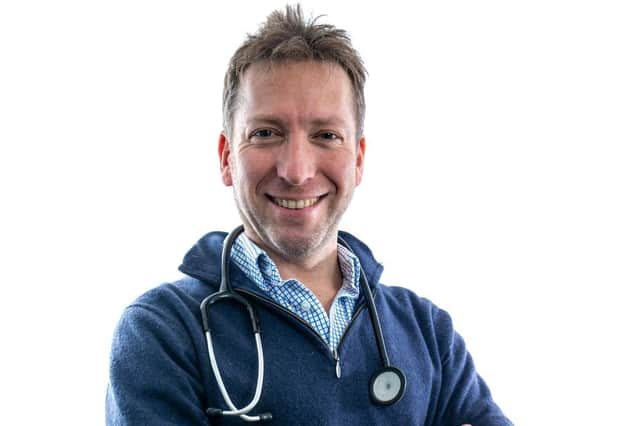The Yorkshire Vet, Julian Norton cuts his teeth in the Scottish Highlands with a pair of escapee sheep


Whether it is a pure coincidence that this was the practice in which I cut my teeth as a young vet or not, I’m still not sure. From my time there, I know there is a rich vein of characters and stories and the backdrop is just as beautiful as anything Yorkshire has to offer.
But making a TV series so far north must have been a huge challenge. Whilst the summer months enjoy long days with huge skies and far-reaching views over distant hills and rugged coastlines, the hibernal gloom makes winter a grim time of year up in Caithness.
Advertisement
Hide AdAdvertisement
Hide AdDarkness and rain are the enemies of television producers and directors. And there is an abundance of both from October to March.
Another challenge to making reality documentaries is the audio. Strong winds play havoc with sound quality and heavy accents can leave viewers confused or perplexed. I remember when
I worked in Caithness I sometimes needed a translator. It was a wild rugged place and the work was equally tough.
It was not uncommon to spend a whole day castrating cattle who had never seen a vet before and hardly knew what a human being was. And as for calving and lambing time! A steady stream of farmers would appear at the end of the afternoon, with trailers full of sheep to lamb.
Advertisement
Hide AdAdvertisement
Hide AdThere was a slick production line for caesarean sections – the skilful vets could complete a caesar in less than ten minutes.
It was a perfect place for a young vet to learn the ropes. I performed my first, solo cow caesarean in a dark cow byre in the small hours. It went to plan and my confidence grew by the day.
Of course, there were setbacks too. One morning, a farmer appeared with two ewes in the back of his trailer, both with bulging prolapses.
During coffee time (a rare event) I volunteered to go into the car park to sort them out. “It should be simple,” I thought. It would have been simple, had the two sheep not jumped over the flimsy tailgate and completed a lap of the carpark before running off up the small road where the practice resided.
Advertisement
Hide AdAdvertisement
Hide AdIf the pair had turned left, they would have quickly arrived in the town square of Thurso, where my embarrassment would have been complete. Luckily, they turned right and headed past some houses and onto a long and quiet lane.
The taciturn farmer and I followed. He couldn’t get past the ewes to head them off. Eventually, and I’m not sure how, the sheep ended up in a ditch, where I managed to jump on top and restrain them both using all arms and legs. The red-faced farmer marched back to get his vehicle. As he disappeared into the distance, I was sure I could see steam still coming from his ears.
The repair of the prolapses was simple after that but completed in the absence of any conversation with the furious farmer. I tried to remain calm and friendly and waved him off, thanking my lucky stars that nothing worse had happened.
I returned to the staff room several hours later, where coffees had long been finished.
Advertisement
Hide AdAdvertisement
Hide Ad“How did the prolapses go?” asked one of the senior vets, mindful that I’d been absent all morning. “Don’t worry. They sometimes do take ages. You’ll get quicker the more you do.”
I nodded, thanked him and kept quiet.
Comment Guidelines
National World encourages reader discussion on our stories. User feedback, insights and back-and-forth exchanges add a rich layer of context to reporting. Please review our Community Guidelines before commenting.